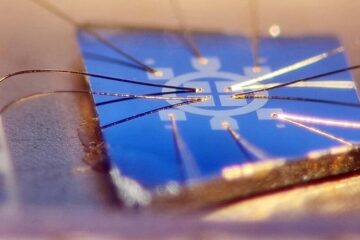Bad cholesterol inhibits the breakdown of peripheral fat

The study, which is a collaboration of two research groups at Karolinska Institutet, is published in the open-access journal PLoS ONE. It shows that LDL cholesterol slows the rate of fat breakdown (i.e. lipolysis) in adipocytes, the peripheral cells responsible for fat storage.
Previously, it has been known that release of free fatty acid from the peripheral fat to the blood stream increases the synthesis of LDL precursors in the liver.
“The results of our study provide evidence of a reciprocal link between the liver and peripheral fat regulating fat turnover”, says study-initiator Dr Johan Björkegren.
The discovery also opens up for new theories for the well-established association between blood lipids and the metabolic syndrome.
“If proven of general physiological importance, therapies lowering LDL, as for instances Statins, may also affect the turnover of peripheral fat,” continues Dr Björkegren.
The study and has been performed on cell cultures and tissues from humans as well as mouse models with different levels of LDL. The inhibitory effect was also shown to be dependent on LDL receptors on the surface of the fat cells.
“The exact intracellular mechanism for how the binding of LDL to the surface of the fat cells inhibits the breakdown of intracellular fat remains to be revealed”, say project leader Dr Josefin Skogsberg
Publication: ‘ApoB100-LDL Acts as a Metabolic Signal from Liver to Peripheral Fat Causing Inhibition of Lipolysis in Adipocytes” Josefin Skogsberg, Andrea Dicker, Mikael Rydén, Gaby Åström, Roland Nilsson, Hasanuzzaman Bhuiyan, Sigurd Vitols, Aline Mairal, Dominique Langin, Peteris Alberts, Erik Walum, Jesper Tegnér, Anders Hamsten, Peter Arner, Johan Björkegren, PLoS ONE, 20 November 2008
Media Contact
All latest news from the category: Health and Medicine
This subject area encompasses research and studies in the field of human medicine.
Among the wide-ranging list of topics covered here are anesthesiology, anatomy, surgery, human genetics, hygiene and environmental medicine, internal medicine, neurology, pharmacology, physiology, urology and dental medicine.
Newest articles

Boron deficiency: oilseed rape reacts as with infection and pest infestation
Genetic mechanisms uncovered… Boron deficiency has a devastating effect on oilseed rape and related plants. However, little is known about the underlying genetic mechanisms. A study shows that the response…

Quantum Precision: A New Kind of Resistor
Researchers at the University of Würzburg have developed a method that can improve the performance of quantum resistance standards. It´s based on a quantum phenomenon called Quantum Anomalous Hall effect….

Security vulnerability in browser interface
… allows computer access via graphics card. Researchers at Graz University of Technology were successful with three different side-channel attacks on graphics cards via the WebGPU browser interface. The attacks…





















